Abstract
Blood lead measurements were obtained on 13,642 persons aged 1 year and older who participated in Phase 2 of the Third National Health and Nutrition Examination Survey (NHANES III) from 1991 through 1994. NHANES III is a national representative survey of the civilian, noninstitutionalized U.S. population. The overall mean blood lead level for the U.S. population aged 1 year and older was 2.3 microgram/dl, with 2.2% of the population having levels >=10 microgram/dl, the level of health concern for children. Among U.S. children aged 1-5 years, the mean blood lead level was 2.7 microgram/dl, and 890,000 of these children (4.4%) had elevated blood lead levels. Sociodemographic factors associated with higher blood lead levels in children were non-Hispanic black race/ethnicity, low income, and residence in older housing. The prevalence of elevated blood lead levels was 21.9% among non-Hispanic black children living in homes built before 1946 and 16.4% among children in low-income families who lived in homes built before 1946. Blood lead levels continue to decline in the U.S. population, but 890,000 children still have elevated levels. Public health efforts have been successful in removing lead from population-wide sources such as gasoline and lead-soldered food and drink cans, but new efforts must address the difficult problem of leaded paint, especially in older houses, as well as lead in dust and soil. Lead poisoning prevention programs should target high-risk persons, such as children who live in old homes, children of minority groups, and children living in families with low income.
Full text
PDF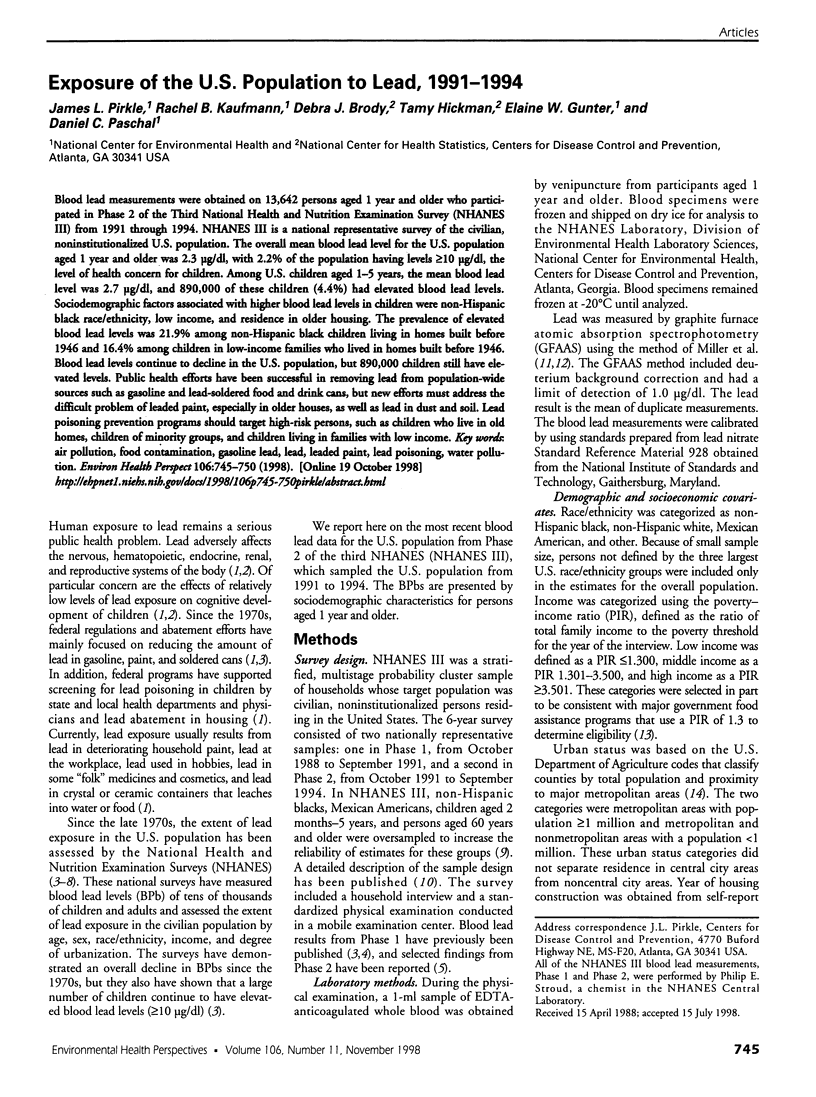
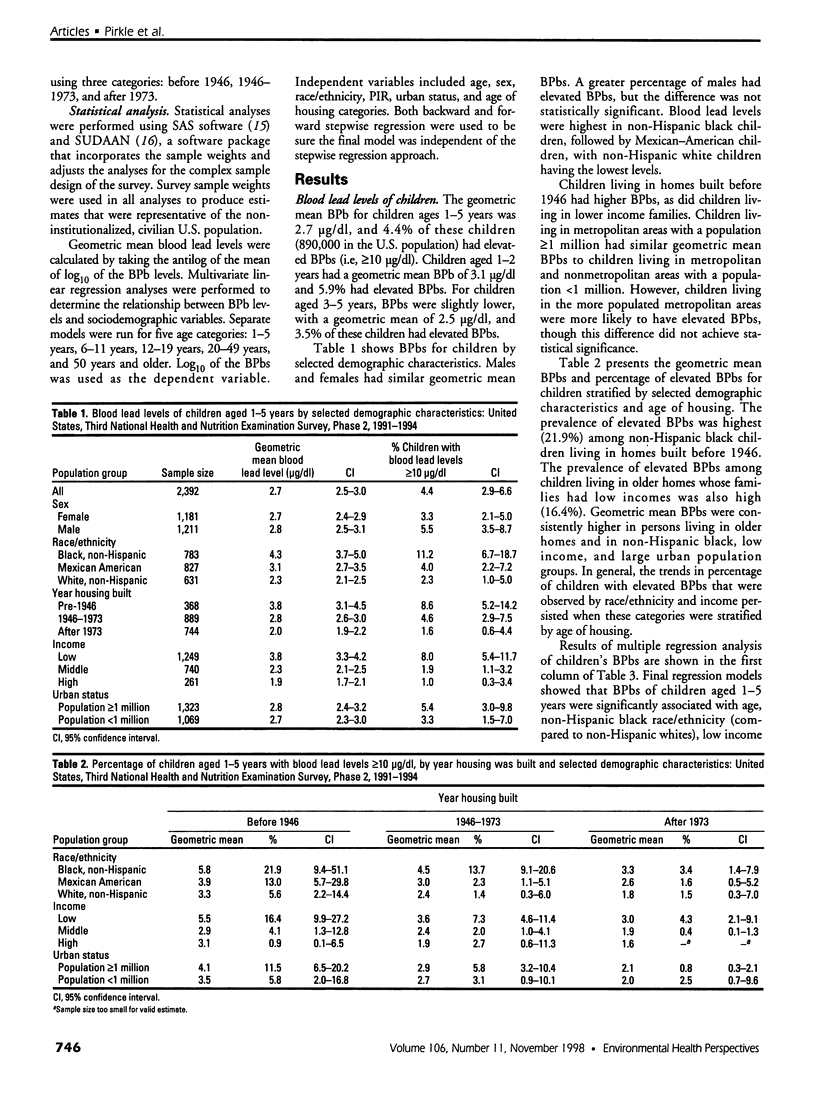
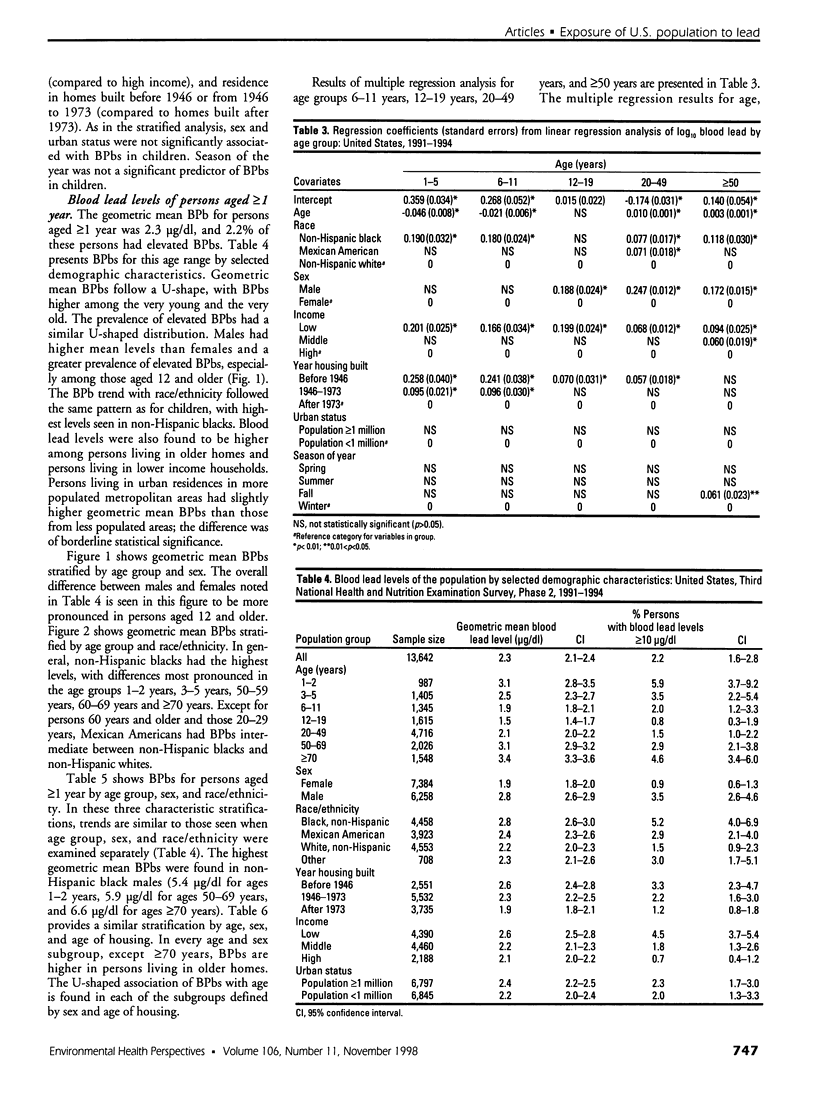
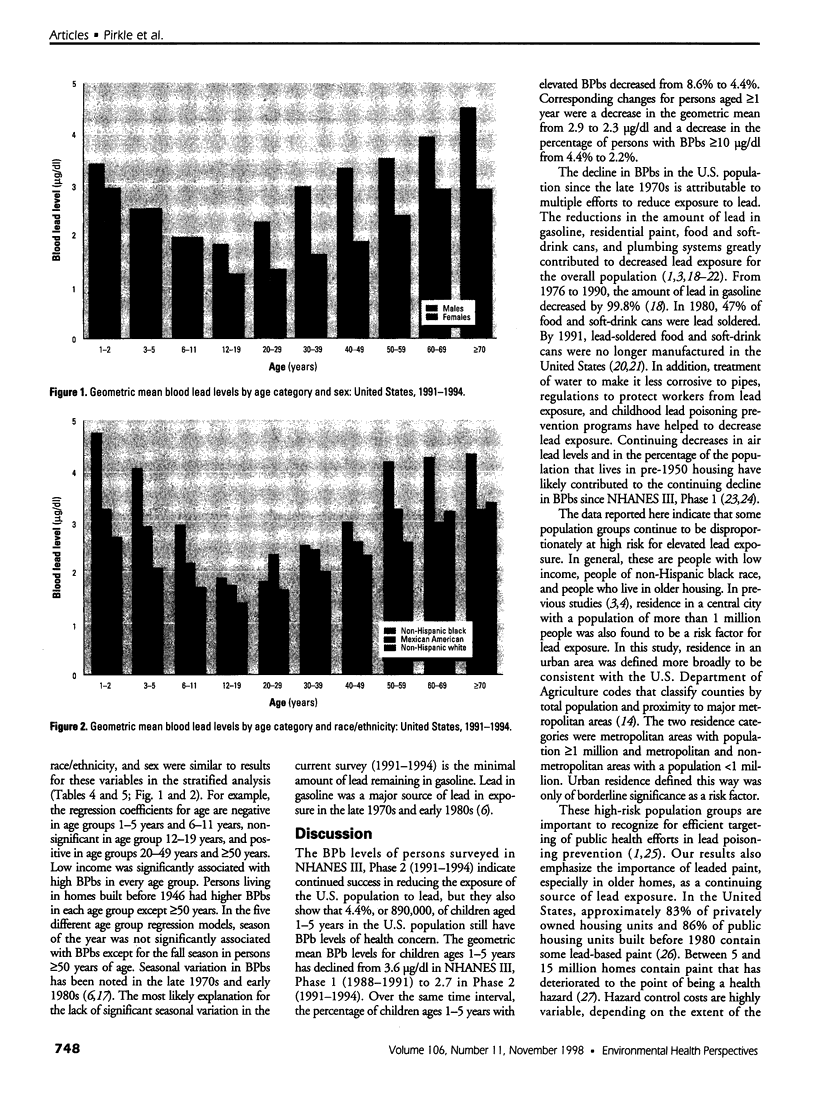
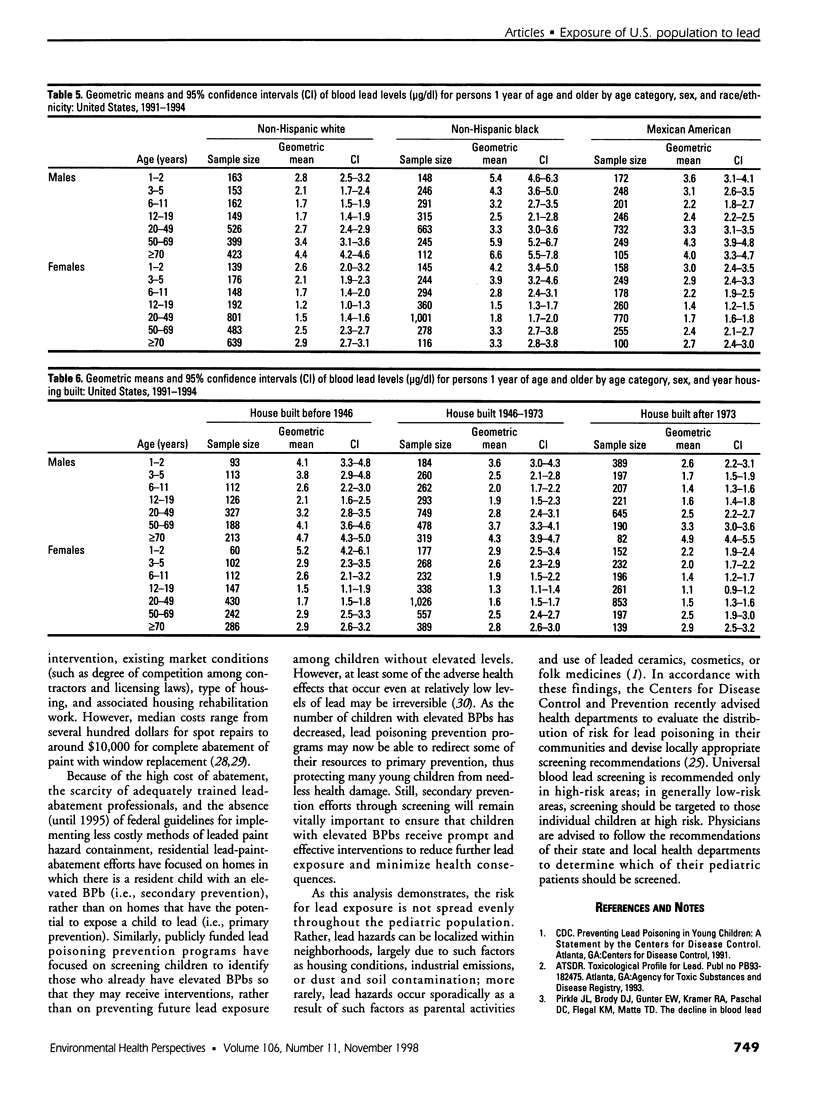

Images in this article
Selected References
These references are in PubMed. This may not be the complete list of references from this article.
- Annest J. L., Pirkle J. L., Makuc D., Neese J. W., Bayse D. D., Kovar M. G. Chronological trend in blood lead levels between 1976 and 1980. N Engl J Med. 1983 Jun 9;308(23):1373–1377. doi: 10.1056/NEJM198306093082301. [DOI] [PubMed] [Google Scholar]
- Brody D. J., Pirkle J. L., Kramer R. A., Flegal K. M., Matte T. D., Gunter E. W., Paschal D. C. Blood lead levels in the US population. Phase 1 of the Third National Health and Nutrition Examination Survey (NHANES III, 1988 to 1991) JAMA. 1994 Jul 27;272(4):277–283. doi: 10.1001/jama.272.4.277. [DOI] [PubMed] [Google Scholar]
- Carter-Pokras O., Pirkle J., Chavez G., Gunter E. Blood lead levels of 4-11-year-old Mexican American, Puerto Rican, and Cuban children. Public Health Rep. 1990 Jul-Aug;105(4):388–393. [PMC free article] [PubMed] [Google Scholar]
- Mahaffey K. R., Annest J. L., Roberts J., Murphy R. S. National estimates of blood lead levels: United States, 1976-1980: association with selected demographic and socioeconomic factors. N Engl J Med. 1982 Sep 2;307(10):573–579. doi: 10.1056/NEJM198209023071001. [DOI] [PubMed] [Google Scholar]
- Miller D. T., Paschal D. C., Gunter E. W., Stroud P. E., D'Angelo J. Determination of lead in blood using electrothermal atomisation atomic absorption spectrometry with a L'vov platform and matrix modifier. Analyst. 1987 Dec;112(12):1701–1704. doi: 10.1039/an9871201701. [DOI] [PubMed] [Google Scholar]
- Silbergeld E. K. Mechanisms of lead neurotoxicity, or looking beyond the lamppost. FASEB J. 1992 Oct;6(13):3201–3206. doi: 10.1096/fasebj.6.13.1397842. [DOI] [PubMed] [Google Scholar]




